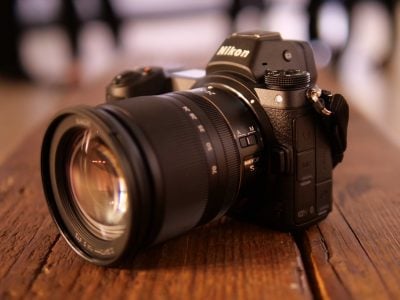Nikon Z7 review
-
-
Written by Gordon Laing
Verdict
The Nikon Z7 is a high-end full-frame mirrorless camera aimed at enthusiasts and professionals, featuring 45 Megapixels, built-in stabilisation, 493 embedded AF points and 9fps burst shooting. Announced in August 2018 alongside the more affordable, faster but lower resolution Z6 model, both cameras launch Nikon’s long-awaited full-frame mirrorless ‘Z’ system.
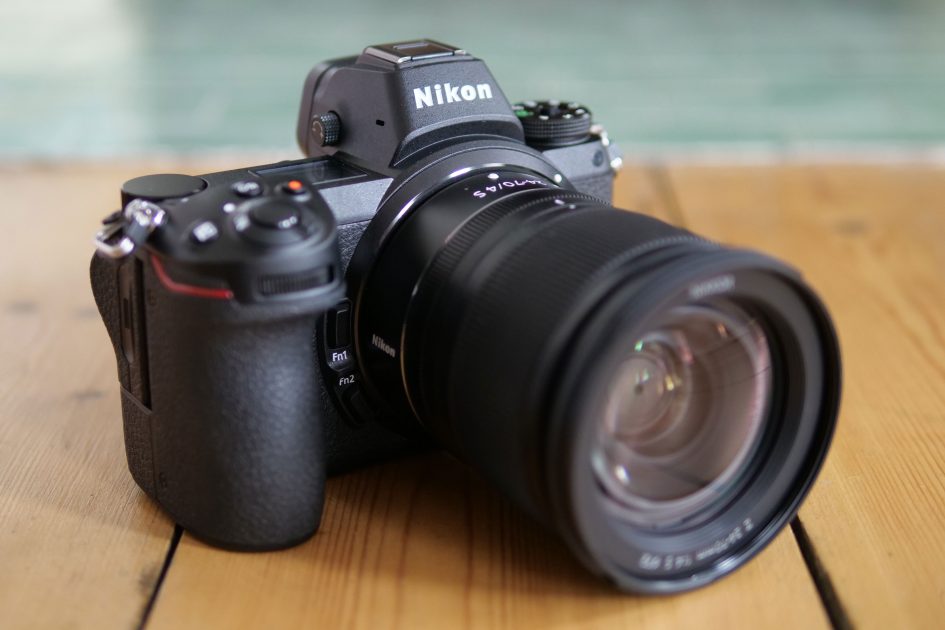
Nikon Z7 vs Nikon Z6
Both the Z7 and Z6 share a great deal in common, including full-frame back-illuminated sensors with embedded phase-detect AF coverage across 90% of the frame (horizontal and vertical, and operating down to -4EV with an f2 lens). The sensors are stabilized in the body with 5-axes and up to five stops of compensation. They both share the same weatherproof bodies with magnesium alloy front, back and top covers, sealed to the same standards as the D850. Both share the same 3.6 Million dot Quad-VGA OLED electronic viewfinders with 0.8x magnification and the same 3.2in / 2.1 million dot tilting touchscreen. Both have the same controls including twin control dials, AF joystick, AF-ON button, and a small upper OLED panel for basic shooting information. Both employ a single XQD memory card slot and are powered by the EN-EL15B battery, good for 310-330 shots under CIPA conditions and USB-chargeable. Both can film 4k UHD video at 24, 25 or 30p or 1080 at up to 120p with audio, have adjustable movie AF speed and sensitivity, and are also equipped with microphone and headphone jacks, 10-bit output over HDMI with Nikon’s flat N-Log profile, focus peaking, zebra patterns, and have Wifi and Bluetooth to support Nikon’s SnapBridge technology.
So far, so similar. Where they differ is in sensor resolution, AF points, burst speed and price. The Nikon Z7 has 45.7 Megapixels, 493 AF points, 64-25600 native ISO sensitivity and 9fps bursts versus 24.5 Megapixels, 273 AF points, 100-51200 native ISO sensitivity and 12fps for the Z6. Perhaps the most important difference though is price, with the Z7 pitched at a more more affordable price-point of around $2000.
Nikon Z7 vs Sony Alpha A7r III
Nikon is under no illusions that the camera to beat – or at least match – is the Sony A7r III, and the Z7 indeed shares a great deal in common with it. in a similarly-sized weatherproof body you’re getting a similar resolution full-frame sensor (45 vs 42 Megapixels), built-in stabilisation (good for 5 vs 5.5 stops), similar burst speed (9 vs 10fps), 4k video up to 30fps or 1080 video up to 120p, quad-VGA viewfinders, tilting touchscreens, embedded phase-detect AF covering large portions of the frame (493 vs 399 points and 90 vs 68% of the horizontal and vertical), and Wifi with Bluetooth.
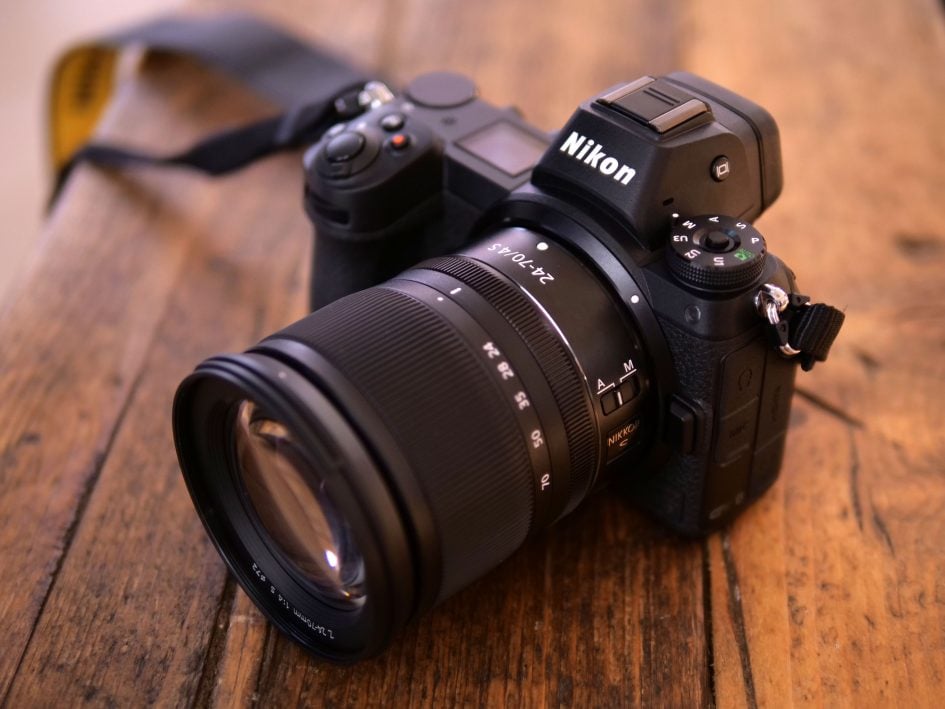
In its favour, the Z7 employs a potentially faster card format with an XQD slot, but sadly lacks the twin slot capabilities of the A7r III. The literally big difference is the lens mount with the wider diameter flange of the Z7 potentially allowing better performance from wide angles or very bright aperture lenses, although the first lens to exploit this isn’t expected until 2019. The controls and grip on the Z7 are arguably a little better than the A7r III, and Nikon makes greater claims over the weather sealing than Sony, but I don’t think the differences will be huge. The Z7 does at least include intervalometer and timelapse video options in-camera, sorely lacking from the Sony and the AF system works down to -4EV compared to -3EV for the Sony. The Z7 can output 10 bit 4k over its HDMI and its autofocus area is also broader than the A7r III, although it lacks eye-detection, let alone eye-detect with continuous AF of the Sony. Finally a big advantage of the Z7 over the Sony is the ability to adapt F-mount lenses with decent support for autofocus – something that will tempt existing Nikon owners to stay with the brand.
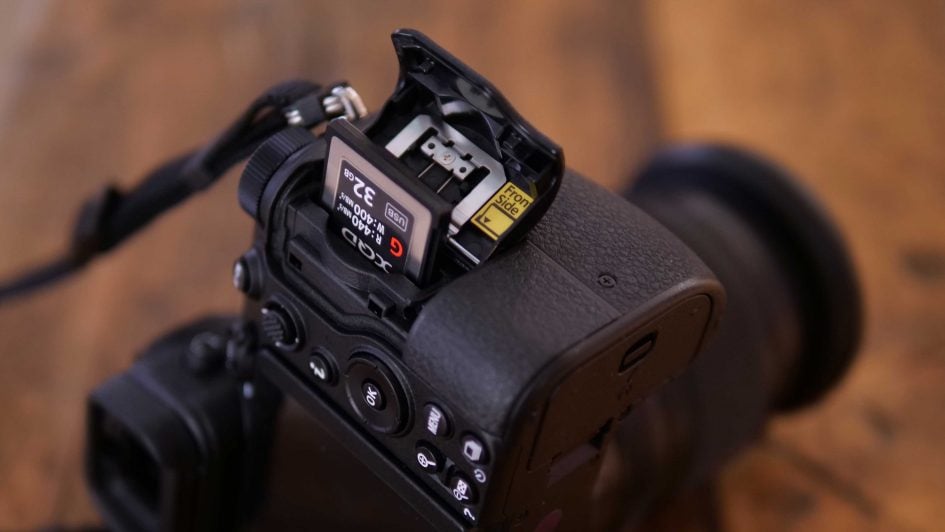
Above: the Z7 records to robust XQD cards, but lacks twin slots.
In its favour, the Sony A7r III already has a significant selection of native lenses available, as well as being able to successfully adapt Canon EF lenses with AF (although this may end up being possible on the Z7 too). It boasts twin card slots (albeit SD and only one supporting UHS-II), double the battery life under CIPA conditions, a PC Sync port, it has eye detection with continuous AF, and a pixel shift mode to minimize demosaicing effects. The A7r III could also shoot deeper bursts compared to the pre-production Z7 I tested, but hopefully this will improve with final models.
Then there’s price with the A7r III currently coming in a little cheaper, although it has already been out for a year compared to the brand new Z7, which will sell at full RRP for a while. If you’re an existing Nikon owner, then it would make sense to choose the Z7 over the A7r III for better potential compatibility with lenses, accessories and familiarity with the menus. But if you don’t have an existing investment in either, there’s little to choose between them. The large Z-mount has a lot of potential but the first lenses to exploit it aren’t available until 2019 and in the meantime there’s a lot of excellent Sony lenses to start collecting. Ultimately we’ll have to wait and see how the image and video quality compares, as well as the overall speed and handling, but for now there isn’t a decisive leader between them. Nikon appears to have successfully matched most of Sony’s features but not taken a lead. See my Sony A7r III review for more details.
Nikon Z7 final verdict
The Nikon Z7 is a high-end full-frame mirrorless camera that jointly launches the Z-system alongside its more affordable, faster but lower resolution sibling, the Z6. The Z7 enters an established and fiercely competitive market, aiming squarely at the Sony Alpha A7r III and matching many of its features as you’d expect: the Z7 gives you a 45 Megapixel sensor, phase-detect AF across most of the frame, built-in stabilisation, 4k video up to 30p, 9fps bursts and Wifi with Bluetooth. In terms of image quality, it’ll essentially match the highly-respected D850 for resolution and noise, not to mention dynamic range in all but the most extreme cases.
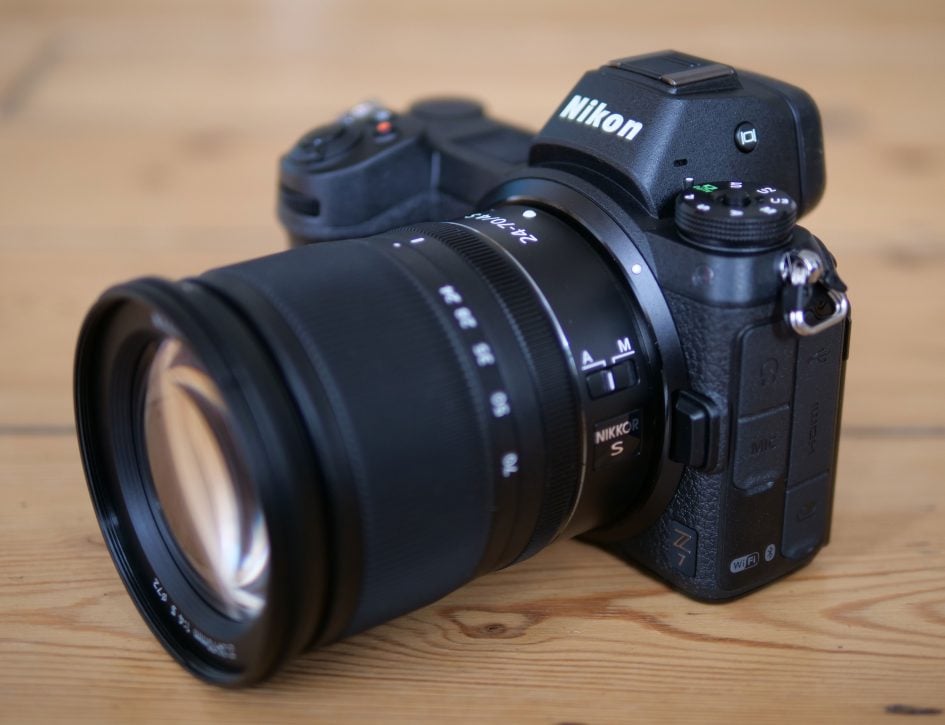
The embedded phase-detect AF transforms the video experience over previous Nikon cameras, now rivalling the best models on the market, and the movie quality, especially in the DX format equals the best of its rivals too; vloggers may wish the screen angled out to face them, but you can always connect an external recorder and exploit the 10-bit output over HDMI. The Z7 will also continuously focus fairly well at its top speed of 9fps, but the lack of effective live feedback even at the lower speed of 5.5fps coupled with a limited buffer mean it’s not best-suited to action photography, especially compared to Sony.
Arguably the biggest downsides though are the lack of twin card slots and a modest selection of native lenses at launch, although the FTZ adapter does a respectable job at autofocusing recent Nikon DSLR lenses, easing the transition for existing Nikon owners. Indeed if you’re making the move to mirrorless, the Z7 is arguably more tempting for existing Nikon owners than the EOS R is for existing Canon owners. If you’re not committed to the Nikon system though, Sony’s A7r III provides a compelling and slightly cheaper alternative with a decent selection of native lenses right now, not to mention twin card slots, eye detection, a pixel-shift composite mode and more successful performance for action.
Ultimately the Z7 is an impressive start to the Z-system and one that’s very satisfying for a version-one product. Nikon’s hit the ground running with a camera I greatly enjoyed using and can easily recommend, especially so if you own existing F-mount lenses.
Check prices on the Nikon Z7 at Amazon, B&H, Adorama, or Wex. Alternatively get yourself a copy of my In Camera book or treat me to a coffee! Thanks!



